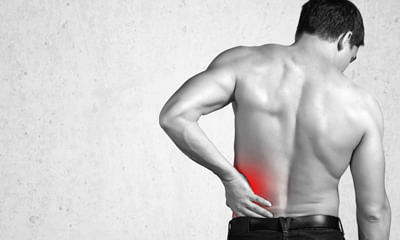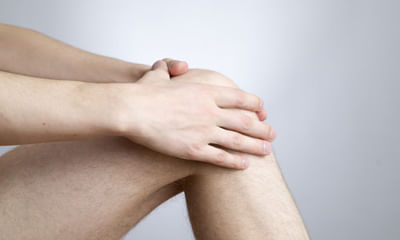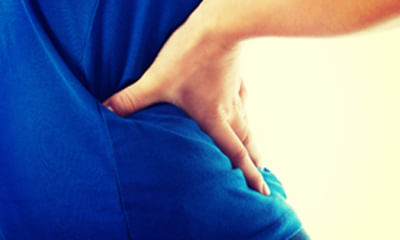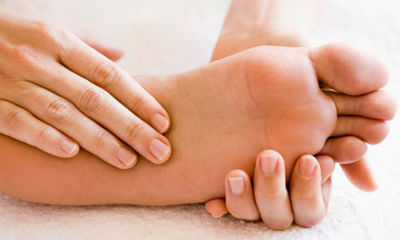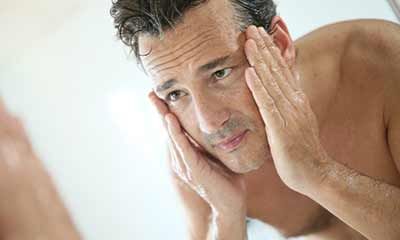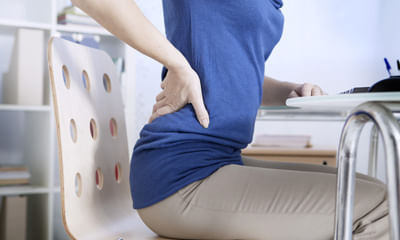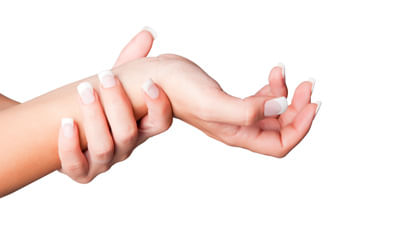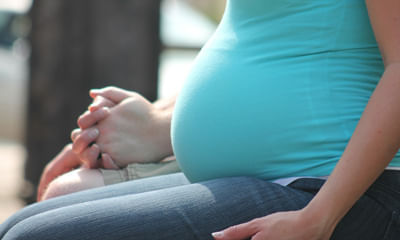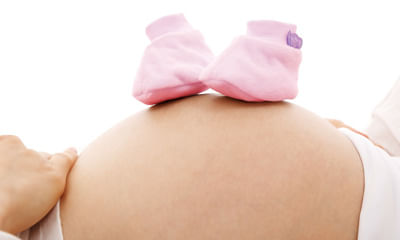Numbness In Thigh During Pregnancy
I have pain in lower back, butt, legs and feet. And also burning sensation in the legs and feet. And I am not able to wa ...
Ask Free Question
If you are suffering from burning pain or tingling sensation in hands or feet; sharp shooting pain in legs; numbness in hands or feet, then you might be suffering from neuropathic pain. What is a neuropathic pain? Neuropathic pain is a special type of pain which occurs when there is damage to nerve fibres, which produces tingling or burning type of pain. It is of two types: 1. Peripheral neuropathic pain: it occurs when there is an injury to peripheral nerve fibres (a-delta or c-fibers) which carries pain sensation to the brain (thalamus) for interpretation. 2. Central neuropathic pain: it occurs due to sensitization of central pain interpreting mechanisms (thalamus) to falsely feel pain when peripheral nerve fibres are no longer sending pain impulses to them. Worldwide-estimates of the prevalence of neuropathic pain is 7% i.e. 7 persons out of 100 people are suffering from different types of neuropathic pain. Symptoms: •tingling sensation or feeling of ants crawling under skin •burning sensation •sharp shooting pain or electric current-like sensation •stabbing pain •dull pain with numbness or heaviness reasons for neuropathic pain: •diabetes mellitus: most common cause worldwide due to uncontrolled blood sugar levels, causing damage to nerve fibres. •alcohol consumption/cigarette smoking: damage to nerve fibres or damage to blood vessels supplying nerve fibres. Burning pain in feet •neck pain/low back pain/glutei pain •vit. B12 deficiency •chemotherapy for cancer patients •post-herpes virus infection •post-spine surgery •post-amputation •diseases like spinal cord injury, multiple sclerosis, hiv, lead toxicity, etc. Special neuropathies: 1. Carpal tunnel syndrome: tingling, burning sensation in hand which occurs due to compression of median nerve in the wrist area. It occurs in women especially due to pregnancy, hypothyroidism, diabetes, etc. And in men due to improper position of the wrist during working on computers. 2. Cervical radiculopathy: pain in neck and shoulder region (which increases with neck movements), along with sharpshooting pain radiating from neck to hand occurs in cases of cervical radiculopathy. This is due to compression of the cervical nerve root by disc prolapse, facet subluxation, muscle spasm, trauma, etc. 3. Lumbar radiculopathy: pain in lower back or glutei region with sharp shooting pain radiating from hip to leg/foot region, occurs in cases of lumbar radiculopathy or sciatica. This is due to compression of lumbar nerve root or sciatic nerve by disc prolapse, facet joint, trauma, hypertrophied ligamentumflavum, piriformis syndrome, etc. 4. Meralgiaparesthetica: tingling or burning sensation in front of the thigh, occurs due to compression of lateral cutaneous nerve of thigh, near waist region. Usual causes are tight or constrictive clothing at waist region, prolonged sitting, protuberant abdomen, etc. Prevention of neuropathy: 1. Avoid alcohol consumption and cigarette smoking. 2. Maintain ideal body weight/bmi (body mass index) 3. Lifestyle changes: daily exercises (>30 minutes per day) or brisk walking or swimming; avoid prolonged sitting or standing (>30 minutes). 4. Food/diet should have following components: •green vegetables e.g. Spinach, fenugreek leaves (methi), radish, etc •coloured vegetables e.g. Tomato, carrot, capsicum (green/red), ladies-finger (bhindi) •milk products e.g. Milk, buttermilk, curd, cheese (paneer) •protein-rich foods e.g. Fish, egg, chicken, pulses (daal) •fibre-rich foods e.g. Bran, oats, brown-rice •fruits e.g. Apple, orange, guava, papaya, pomegranate, berries 5. Blood sugar control (in diabetics) 6. Care of feet: •regular inspection of feet (with mirror) •comfortable, well-fitted shoes •regular consultation with a podiatrist •treatment of wounds, foot deformities 7. Adequate sleep 8. Warm water bath (increases blood flow to the affected area) treatment: •consult pain medicine specialist. •neuropathic painkillers e.g. Amitriptyline, pregabalin, gabapentin, capsaicin, duloxetine, etc. •vit. B12 supplements, anti-oxidants, multi-vitamins. •transcutaneous electrical nerve stimulation (tens) •acupuncture •relaxation and yoga •neural prolotherapy.
I'm 24 years male. I'm having pain in foot for around an year but have ignored but it was still there. It is kind of bur ...
Ask Free Question
Burning pain or tingling sensation in hands or feet if you are suffering from burning pain or tingling sensation in hands or feet; sharp shooting pain in legs; numbness in hands or feet, then you might be suffering from neuropathic pain what is a neuropathic pain? Neuropathic pain is a special type of pain which occurs when there is damage to nerve fibres, which produces tingling or burning type of pain. It is of two types: 1. Peripheral neuropathic pain: it occurs when there is an injury to peripheral nerve fibres (a-delta or c-fibers) which carries pain sensation to the brain (thalamus) for interpretation. 2. Central neuropathic pain: it occurs due to sensitization of central pain interpreting mechanisms (thalamus) to falsely feel pain when peripheral nerve fibres are no longer sending pain impulses to them. Worldwide-estimates of the prevalence of neuropathic pain is 7% i.e. 7 persons out of 100 people are suffering from different types of neuropathic pain. Symptoms: •tingling sensation or feeling of ants crawling under skin •burning sensation •sharp shooting pain or electric current-like sensation •stabbing pain •dull pain with numbness or heaviness reasons for neuropathic pain: •diabetes mellitus: most common cause worldwide due to uncontrolled blood sugar levels, causing damage to nerve fibres. •alcohol consumption/cigarette smoking: damage to nerve fibres or damage to blood vessels supplying nerve fibres. Burning pain in feet •neck pain/low back pain/glutei pain •vit. B12 deficiency •chemotherapy for cancer patients •post-herpes virus infection •post-spine surgery •post-amputation •diseases like spinal cord injury, multiple sclerosis, hiv, lead toxicity, etc. Special neuropathies: 1. Carpal tunnel syndrome: tingling, burning sensation in hand which occurs due to compression of median nerve in the wrist area. It occurs in women especially due to pregnancy, hypothyroidism, diabetes, etc. And in men due to improper position of the wrist during working on computers. 2. Cervical radiculopathy: pain in neck and shoulder region (which increases with neck movements), along with sharpshooting pain radiating from neck to hand occurs in cases of cervical radiculopathy. This is due to compression of the cervical nerve root by disc prolapse, facet subluxation, muscle spasm, trauma, etc. 3. Lumbar radiculopathy: pain in lower back or glutei region with sharp shooting pain radiating from hip to leg/foot region, occurs in cases of lumbar radiculopathy or sciatica. This is due to compression of lumbar nerve root or sciatic nerve by disc prolapse, facet joint, trauma, hypertrophied ligamentumflavum, piriformis syndrome, etc. 4. Meralgiaparesthetica: tingling or burning sensation in front of the thigh, occurs due to compression of lateral cutaneous nerve of thigh, near waist region. Usual causes are tight or constrictive clothing at waist region, prolonged sitting, protuberant abdomen, etc. Prevention of neuropathy: 1. Avoid alcohol consumption and cigarette smoking. 2. Maintain ideal body weight/bmi (body mass index) 3. Lifestyle changes: daily exercises (>30 minutes per day) or brisk walking or swimming; avoid prolonged sitting or standing (>30 minutes). 4. Food/diet should have following components: •green vegetables e.g. Spinach, fenugreek leaves (methi), radish, etc •coloured vegetables e.g. Tomato, carrot, capsicum (green/red), ladies-finger (bhindi) •milk products e.g. Milk, buttermilk, curd, cheese (paneer) •protein-rich foods e.g. Fish, egg, chicken, pulses (daal) •fibre-rich foods e.g. Bran, oats, brown-rice •fruits e.g. Apple, orange, guava, papaya, pomegranate, berries 5. Blood sugar control (in diabetics) 6. Care of feet: •regular inspection of feet (with mirror) •comfortable, well-fitted shoes •regular consultation with a podiatrist •treatment of wounds, foot deformities 7. Adequate sleep 8. Warm water bath (increases blood flow to the affected area) treatment: •consult pain medicine specialist. •neuropathic painkillers e.g. Amitriptyline, pregabalin, gabapentin, capsaicin, duloxetine, etc. •vit. B12 supplements, anti-oxidants, multi-vitamins. •transcutaneous electrical nerve stimulation (tens) •acupuncture •relaxation and yoga •neural prolotherapy.
I'm 24 years male. I'm having pain in foot for around an year but have ignored but it was still there. It is kind of bur ...
Ask Free Question
Burning pain or tingling sensation in hands or feet if you are suffering from burning pain or tingling sensation in hands or feet; sharp shooting pain in legs; numbness in hands or feet, then you might be suffering from neuropathic pain what is a neuropathic pain? Neuropathic pain is a special type of pain which occurs when there is damage to nerve fibres, which produces tingling or burning type of pain. It is of two types: 1. Peripheral neuropathic pain: it occurs when there is an injury to peripheral nerve fibres (a-delta or c-fibers) which carries pain sensation to the brain (thalamus) for interpretation. 2. Central neuropathic pain: it occurs due to sensitization of central pain interpreting mechanisms (thalamus) to falsely feel pain when peripheral nerve fibres are no longer sending pain impulses to them. Worldwide-estimates of the prevalence of neuropathic pain is 7% i.e. 7 persons out of 100 people are suffering from different types of neuropathic pain. Symptoms: •tingling sensation or feeling of ants crawling under skin •burning sensation •sharp shooting pain or electric current-like sensation •stabbing pain •dull pain with numbness or heaviness reasons for neuropathic pain: •diabetes mellitus: most common cause worldwide due to uncontrolled blood sugar levels, causing damage to nerve fibres. •alcohol consumption/cigarette smoking: damage to nerve fibres or damage to blood vessels supplying nerve fibres. Burning pain in feet •neck pain/low back pain/glutei pain •vit. B12 deficiency •chemotherapy for cancer patients •post-herpes virus infection •post-spine surgery •post-amputation •diseases like spinal cord injury, multiple sclerosis, hiv, lead toxicity, etc. Special neuropathies: 1. Carpal tunnel syndrome: tingling, burning sensation in hand which occurs due to compression of median nerve in the wrist area. It occurs in women especially due to pregnancy, hypothyroidism, diabetes, etc. And in men due to improper position of the wrist during working on computers. 2. Cervical radiculopathy: pain in neck and shoulder region (which increases with neck movements), along with sharpshooting pain radiating from neck to hand occurs in cases of cervical radiculopathy. This is due to compression of the cervical nerve root by disc prolapse, facet subluxation, muscle spasm, trauma, etc. 3. Lumbar radiculopathy: pain in lower back or glutei region with sharp shooting pain radiating from hip to leg/foot region, occurs in cases of lumbar radiculopathy or sciatica. This is due to compression of lumbar nerve root or sciatic nerve by disc prolapse, facet joint, trauma, hypertrophied ligamentumflavum, piriformis syndrome, etc. 4. Meralgiaparesthetica: tingling or burning sensation in front of the thigh, occurs due to compression of lateral cutaneous nerve of thigh, near waist region. Usual causes are tight or constrictive clothing at waist region, prolonged sitting, protuberant abdomen, etc. Prevention of neuropathy: 1. Avoid alcohol consumption and cigarette smoking. 2. Maintain ideal body weight/bmi (body mass index) 3. Lifestyle changes: daily exercises (>30 minutes per day) or brisk walking or swimming; avoid prolonged sitting or standing (>30 minutes). 4. Food/diet should have following components: •green vegetables e.g. Spinach, fenugreek leaves (methi), radish, etc •coloured vegetables e.g. Tomato, carrot, capsicum (green/red), ladies-finger (bhindi) •milk products e.g. Milk, buttermilk, curd, cheese (paneer) •protein-rich foods e.g. Fish, egg, chicken, pulses (daal) •fibre-rich foods e.g. Bran, oats, brown-rice •fruits e.g. Apple, orange, guava, papaya, pomegranate, berries 5. Blood sugar control (in diabetics) 6. Care of feet: •regular inspection of feet (with mirror) •comfortable, well-fitted shoes •regular consultation with a podiatrist •treatment of wounds, foot deformities 7. Adequate sleep 8. Warm water bath (increases blood flow to the affected area) treatment: •consult pain medicine specialist. •neuropathic painkillers e.g. Amitriptyline, pregabalin, gabapentin, capsaicin, duloxetine, etc. •vit. B12 supplements, anti-oxidants, multi-vitamins. •transcutaneous electrical nerve stimulation (tens) •acupuncture •relaxation and yoga •neural prolotherapy.
Hello I am 24 year I have numbness and tingling sensation in my left side thigh this problem facing last six months afte ...
Ask Free Question
Report check and summary. Satya kishor sharma hello I have some report I want to you check and give me information about report. Hello! i'll do my best to help you. What kind of report do you have? Can you give me more details about it? Satya kishor sharma hello I am 24 year I have numbness and tingling sensation in my left side thigh this problem facing last six months after my pregnancy delivery once I visited neurologist he recommended me mri and prescribed medicine tab duloxetine 30 mg and tab methylcobalamin+gabapentin (500/300 mg) but still I have no improvement in my problem please suggest effective treatment. Based on the symptoms you have described, it's possible that you are experiencing a condition called meralgia paresthetica, which is a type of nerve compression syndrome that affects the lateral femoral cutaneous nerve in the thigh. The medication prescribed to you by the neurologist, duloxetine and methylcobalamin+gabapentin, are commonly used to treat nerve pain and may help alleviate some of your symptoms. However, it's important to note that it may take several weeks for these medications to take effect. In addition to medication, there are some other treatments that may help relieve your symptoms: physical therapy: working with a physical therapist can help to stretch and strengthen the muscles surrounding the affected nerve, which can help to reduce pressure on the nerve and alleviate symptoms. Nerve blocks: a nerve block involves injecting a local anesthetic directly into the affected nerve to temporarily block the pain signals. Surgery: in rare cases, surgery may be necessary to relieve pressure on the affected nerve. It's important to follow up with your neurologist and discuss these treatment options to determine the best course of action for you. Additionally, it may be helpful to discuss any lifestyle changes that may be contributing to your symptoms, such as sitting for prolonged periods of time or wearing tight clothing. Get mri done and take further opinion from doctor.
Hello doctor, i've noticed these blisters are growing slowly and new blisters are also growing. I don't know what is the ...
Ask Free Question
Report check and summary. Satya kishor sharma hello I have some report I want to you check and give me information about report. Hello! i'll do my best to help you. What kind of report do you have? Can you give me more details about it? Satya kishor sharma hello I am 24 year I have numbness and tingling sensation in my left side thigh this problem facing last six months after my pregnancy delivery once I visited neurologist he recommended me mri and prescribed medicine tab duloxetine 30 mg and tab methylcobalamin+gabapentin (500/300 mg) but still I have no improvement in my problem please suggest effective treatment. Based on the symptoms you have described, it's possible that you are experiencing a condition called meralgia paresthetica, which is a type of nerve compression syndrome that affects the lateral femoral cutaneous nerve in the thigh. The medication prescribed to you by the neurologist, duloxetine and methylcobalamin+gabapentin, are commonly used to treat nerve pain and may help alleviate some of your symptoms. However, it's important to note that it may take several weeks for these medications to take effect. In addition to medication, there are some other treatments that may help relieve your symptoms: physical therapy: working with a physical therapist can help to stretch and strengthen the muscles surrounding the affected nerve, which can help to reduce pressure on the nerve and alleviate symptoms. Nerve blocks: a nerve block involves injecting a local anesthetic directly into the affected nerve to temporarily block the pain signals. Surgery: in rare cases, surgery may be necessary to relieve pressure on the affected nerve. It's important to follow up with your neurologist and discuss these treatment options to determine the best course of action for you. Additionally, it may be helpful to discuss any lifestyle changes that may be contributing to your symptoms, such as sitting for prolonged periods of time or wearing tight clothing. Satya kishor sharma hello doctor, i've noticed these blisters are growing slowly and new blisters are also growing. I don't know what is the exact problem and cause for this. Please guide me through this. I'm sorry to hear that you're experiencing blisters that are growing and spreading. There are many potential causes of blisters, so it's important to have a healthcare provider examine them to determine the underlying cause and recommend appropriate treatment. Measures to help prevent further irritation or friction on the affected area, such as using cushioned insoles in shoes or wearing gloves.
I am 28 years female and I am suffering from back pain should I plan for pregnancy? Please help me. ...
Ask Free Question
Because your kidneys are located toward your back and underneath your ribcage, it may be hard to tell if the pain you’re experiencing in that area is coming from your back or your kidney. The symptoms you’re having can help you figure out which is the source of the pain. The location, type, and severity of the pain are some of the things that will be different depending on whether the pain is from a problem in your kidneys or your back. How to identify kidney painkidney pain is most often caused by a kidney infection or a stone in the tubes coming out of your kidney. If the pain is coming from your kidney, it will have these features: where the pain is located kidney pain is felt in your flank, which is the area on either side of your spine between the bottom of your ribcage and your hips. It usually occurs in one side of your body, but it can occur in both sides. Type of pain kidney pain is usually sharp if you have a kidney stone and a dull ache if you have an infection. Most often it will be constant. It won’t get worse with movement or go away by itself without treatment. If you’re passing a kidney stone, the pain may fluctuate as the stone moves. Radiation of the pain sometimes the pain spreads (radiates) to your inner thigh or lower abdomen. Severity of the pain kidney pain is classified according to how bad it is — severe or mild. A kidney stone usually causes severe pain, and the pain from an infection is usually mild. Things that make it better or worse typically, nothing makes the pain better until the problem is corrected, such as by passing the stone. Unlike back pain, it usually won’t change with movement. Accompanying symptoms if you have a kidney infection or a kidney stone, you may also experience: •fever and chills •nausea and vomiting •cloudy or dark urine •an urgent need to urinate •pain when you urinate •a recent infection in your bladder •blood in your urine (this can happen with an infection or kidney stones) •small kidney stones that look like gravel in your urine how to identify back pain back pain is more common than kidney pain and is usually caused by a problem in the muscles, bones, or nerves in your back. Has the following features: where the pain is located back pain can occur anywhere on your back, but it’s most commonly located in your lower back or one of your buttocks. Type of pain muscle pain feels like a dull ache. If a nerve has been injured or irritated, the pain is a sharp burning sensation that may travel down your buttock to your lower leg or even your foot. Muscle pain may affect one or both sides, but nerve pain usually only affects one side. Radiation of the pain nerve pain may spread to your lower leg. Pain from a muscle usually stays in the back. Severity of the pain back pain is described as acute or chronic based on how long you’ve had it. Acute pain lasts days to weeks, subacute pain lasts six weeks to three months, and chronic pain lasts longer than three months. Things that make it better or worse back pain may get worse with movement or if you sit or stand for a long time. It may get better if you switch positions or walk around. Accompanying symptoms other symptoms you may experience with back pain include: •the painful spot looking swollen and feeling tender to the touch •a muscle spasm in the painful area •numbness or weakness in one or both of your legs (if the pain is due to a nerve issue) if you find you have back pain and can’t hold your urine or bowel movements, something is pressing on your spinal nerves, and you should be evaluated immediately. This condition, called cauda equina syndrome, can cause severe long-term damage to your spinal nerves if not treated right away. 6 imbalances that cause pain—and how to fix them "pain is a medical condition and a medical issue, says brett jones, owner of applied strength in pittsburgh who is certified for the functional movement screen, a system of tests and cor rective exercise strategies. "it's a warning sign. The pain is there to tell you something's wrong. And that warning sign could be more serious than "you're going too hard. Jones and the other coaches consulted for this piece all had a horror story to tell-when pain in a client meant a more serious condition such as a nerve issue, thyroid issue, or even cancer. The point: if you experience regular pain while exercising-or when you're not-go to the doctor. If you've been cleared by a doc and you're still feeling discomfort, try these simple tests to see what's truly causing the pain-it could be related to an imbalance in a completely different part of your body. The good news: with these drills, stretches, and corrective exercises, you may be able to fix them-no doctors necessary. Neck pain and headaches? Could be your shoulders. If you're experiencing these symptoms and have been cleared by a doctor, check out the height of your shoulders, says aaron brooks, a biomechanics expert and owner of perfect postures in auburndale, ma. "look in the mirror and see if one shoulder is higher or lower than the other, he says. If one of your shoulders is higher than the other, you'll be strengthening one more than the other, and it may wind up pulled forward more than the other-resulting an inward rotation of that hand. "when you do a row or a press, that side's going to get pinched. There's less room in the shoulder. You can wind up with bursitis or tendonitis. Or headaches and neck pain. Fix it: if the mirror test shows they're uneven, try this single-arm doorway stretch, brooks says. To do it, stand inside the threshold of a door, and place your right forearm inside the door on the right side of the jamb, palm against the jamb at about shoulder height. In this position, twist your chest slightly through the door to stretch your chest-alternately, you can take a step forward with your right foot, keeping your left foot in the threshold. This stretch will open your chest muscles and create room in your shoulder for movement. Pair that stretch with this mid-back strengthening exercise: grab a resistance band and stretch it in front of your chest so that your arms are straight out to the sides from your shoulders, palms facing up. At the full extension of your arms, the band should be stretched out. Return to clap your hands in front, and repeat the movement. Pair these two moves-in this order-three times per week. Shoulders even? Your headaches could be from a forward-leaning head. If you don't see an imbalance in the height of your shoulders, turn to the side, says robert taylor, owner of smarter team training in baltimore. If your head is jutting far forward of your shoulders, it could ultimately decrease the amount of blood flow to your head and neck. "the head leans forward, the spine leans forward, and it puts unnecessary stress on the lower spine too, he says. With the decreased blood flow to your thinking cap, you could get headaches. Fix it: increase blood flow up top and return your head to its natural, up-tall position by strength training your neck, taylor says. Try this one-arm shrug to even things out: sit on an upright bench, like one you'd use for a shoulder press. Holding a dumbbell in your right hand, place your left hand under your left butt cheek and grab the side of the seat. Let your right hand hang down straight by your side and pull your shoulder blades back and together. Now raise your right shoulder up towards your ear-raise it straight up instead of rolling your shoulder. Hold for a beat at the top, and then return to the start position. Complete a set of 10, and repeat on the other side. Knee pain when you run? Could be your hips. "the knee has two bad neighbors-the hip and the ankle, jones says. The pain you feel in your knee could very well be tightness or immobility in those bad neighbors. "they sweep all their leaves into the knee's yard. Everyone blames the knee, but it's the neighbors. To see if your hips have a proper level of mobility, lay on your back in a doorway so that the middle of your kneecap is right on the threshold. Relax your arms at your sides, palms up. Bring your feet together, toes pointed at the ceiling. Pull your toes towards your shins to create a 90-degree angle at the ankle. Keep one leg straight and still as you slowly raise the other leg until either your knee bends on your raising leg, or your bottom foot bends or turns out to the side. "see if the knobby part of your ankle can make it past the door frame, jones says. If it does, your hips are plenty mobile-check the ankle test below to see if that's causing some knee issues. If either ankle can't make it, foam roll your hips and glutes, and then work on this stretch using a belt or strap for instant improvement. Fix it: lying in the same position as during the test, wrap a strap or belt around one foot and raise it until you just start to feel a stretch-not to the level where it's all the stretch you can take, but just the beginning of the stretch, jones says. Once here, bring your other leg up to meet it. Return the non-strapped leg to the floor. At this point, you may find that the strapped leg can come up a little higher. When it does, bring the non-strapped leg up to meet it again. Continue until you no longer feel progress in the strapped leg, and switch. Hips moving ok? Check your ankles. If your hips are mobile (and even if they're not), ankle mobility can also lead to knee pain, says mike perry, owner of skill of strength in north chelmsford, mass. Who is certified in the functional movement screen. To see how mobile your ankles are (or aren't), assume a one-knee position facing a wall. Your knees should both form 90-degree angles, and the toe of your planted foot should be about four inches from the wall. In this position, perry says, try to glide your knee over the pinky toe to touch the wall without lifting your heel. If you can reach the wall, your ankle is gliding correctly. If your foot comes up before your knee touches the wall, your calves are "incredibly tight, perry says. Fix it: to help remedy this issue, foam roll your calves and try this variation on that ankle test from brett jones. Assume the same half-kneeling position, and place the point of a broomstick on the pinky toe of your planted foot. Hold the stick so it's touching the outside of your knee. With the stick in this position, keeping your knee from flaring out to the side, glide the knee forward slowly, stopping when your heel leaves the ground. If you perform this as a drill, jones says, you can see as much as half an inch of improvement in the first session. If you feel pain during the drill, stop and consult a physician. Lower-back tightness? Might be your hips. As with knee pain, back discomfort often isn't a back problem at all, brooks says. If one side of your pelvis is higher than the other, it can result in back pain, hip pain, groin pain, or even knee pain. "if you try to do a lunge, the knee on the high side will cave in and the hip will angle inward, brooks says. The repercussions of this change over time can be knee pain, a patella tear, a medial meniscus injury, or hip bursitis. But back to your back-the unevenness of your hips can pull on your lower back, causing that tightness while sitting all day. Fix it: if you notice your hips are uneven, try this hip abduction exercise. Lie on your back with knees bent and feet flat on the floor, hip-width apart (the classic sit-up position). Wrap a small resistance band around your knees so that it's already a little tight while your knees are together. Now press out against the strap to separate your knees until they form a v-shape, holding at the outermost edge of the press for a few moments. This move helps to fix the hip imbalance because "in the lying position, the muscles that are causing the pelvis to be out of alignment are shut off, brooks says. Repeat for 2 sets of 20 reps, 3 times per week. Tail bone pain the lower end of the vertebral column is inflamed and that bone is called coccyx bone and the condition is called coccydynia. The conservative management would be to keep ice in that inflamed area during one time in a day and also to sit in a hot water bowl where the penetration of the heat would help to reduce the inflammation. And to reduce the weight falling on the inflammed surface we suggest patients to use air cushion pillow (also called as doughnut pillow) where in the buttock's weight will not fall exactly on the painful tail bone and that would automatically reduce the pain. For this the best treatment would be to undergo ultrasonic therapy in one of the nearby physiotherapy clinics.
Sir my mother is 42 years old. Her left leg has swollen for years .day by day the swelling has been increased to whole l ...
Ask Free Question
Leg swelling generally occurs because of an abnormal accumulation of fluid in the tissues of the lower extremity. Common causes of leg swelling include idiopathic edema (swelling of unknown cause), overweight, is older, salt retention, cellulitis, congestive heart failure, venous insufficiency, pregnancy, and medication side effects. Some tips that may help reduce swelling: 1.Put your legs on pillows to raise them above your heart while lying down. 2.Exercise your legs. This helps pump fluid from your legs back to your heart. 3.Follow a low-salt diet, which may reduce fluid buildup and swelling. 4.Wear support stockings (sold at most drugstores and medical supply stores). 5.When traveling, take breaks often to stand up and move around. 6.Avoid wearing tight clothing or garters around your thighs. 7.Lose weight if you need to.
At the time me and my husband have sex I'm getting Soo much pain. Can you help me why. ...
Ask Free Question
Dyspareunia is a term used for pain felt in the genital area or pelvis during or after having sex (intercourse). Nobody really knows exactly how common it is, as many women never seek medical help. However, questionnaires asking women if they have symptoms suggest that somewhere between 1 and 4 out of 10 women experience it. Most commonly, this is early in their sexual lives or around the menopause. There are many causes of dyspareunia, most of which are not serious or damaging in nature, but all can be detrimental to your sex life and ultimately may lead to relationship difficulties. It can be a vicious circle, with pain leading to nervousness about having sex, and nervousness leading to dryness and further pain. It's also not uncommon for dyspareunia to remain after the cause has been treated, particularly if things have been left untreated for a while. For this reason, it is important to seek help early, so that treatable causes can be discovered and managed. This leaflet discusses the types and possible causes of dyspareunia. What is dyspareunia? Dyspareunia is pain felt in the genital area or pelvis during or after having sex (intercourse). It may be thought of as either superficial dyspareunia or deep dyspareunia. They have different causes and treatments and, although it's possible to experience both at the same time, most women find that their dyspareunia is predominantly one or the other type. Superficial dyspareunia This is pain felt in the lips of the vagina (labia), at the vaginal entrance (introitus) and the lower part of the vagina. It typically begins with penetration or very early on after intercourse has begun. It is sore and instant. It is usually quickly relieved by stopping penetration, although you may be sore to the touch afterwards for a little while. The causes of superficial dyspareunia are usually local problems of the labial, vaginal and perineal skin (the perineum is the area of skin between the vaginal opening and the back passage). Deep dyspareunia This is the term for pain felt deeper in the pelvis during or after intercourse. It can also spread to involve the fronts of the thighs. It may be sharp or dull, may stop when penetration stops or can continue for minutes or even hours. The causes of this type of pain usually lie rather deeper in the pelvis. Causes of superficial dyspareunia Skin bridge Formation of a little bridge of scar tissue at the very back of the vaginal entrance (introitus) is common after childbirth, particularly if you have had a cut between the vagina and back passage (anus) - a procedure called episiotomy. The scar tissue contains nerve endings and is very sensitive, and so it causes pain on penetration. The pain tends to become worse as having sex (intercourse) continues, as the skin bridge becomes rubbed by the continuing rubbing of penetration. Intact hymen The hymen is a membrane that lines the vaginal opening. Early in your sex life the hymen is broken down by the act of having sex. In many young women it will already have been stretched by use of tampons. The name 'intact hymen' is misleading, as the hymen does in fact have a small hole in it from birth. This hole becomes larger little by little as girls grow older. However, the hymen can be quite thick and the hole not quite large enough. This can mean that early in her sexual life a woman my feel pain from the hymen as it is forced open the first time she has intercourse. The pain is superficial, felt at the entrance to the vagina as soon as penetration is attempted and may prevent it from taking place. Vaginismus Vaginismus causes a powerful and often painful contraction of the muscles around the entrance to the vagina, which makes penetration painful or impossible. It may also prevent the use of tampons and any sort of gynaecological examination. The spasm of vaginismus is not something you can cause deliberately; it's completely outside your control. It may seem to begin for no reason but can also result from a painful or worrying experience of sex, when it becomes a kind of protective reflex. However, vaginismus is upsetting and dispiriting for both halves of a couple, as it can prevent the enjoyment of sex for many years and can prevent sex completely. Once it has begun, fear of failure and nervousness about not being able to have sex make it worse. It's important to seek help to break the cycle of anxiety and pain. Vaginismus is not difficult to treat but your doctor may need to refer you to a psychologist or specialist physiotherapist. Bartholinitis Bartholin's glands are a pair of glands on either side of the vagina, in the tissues of the wall. They can become inflamed and tender causing Bartholinitis and this will lead to pain during sex. Occasionally, the glands swell during sex, so that it starts off as painless but then becomes painful as it continues. See separate leaflet called Bartholin's Cyst and Abscess for more details. Vulvodynia This is a very troublesome condition where the vulval area becomes painful and extremely sensitive to pressure and touch. It can be accompanied by severe pain on attempted penetration. It can also cause the vulval area to be painful touched and during activities of everyday living. It can lead to frustration and depression, as symptoms can be very long-standing. The causes are uncertain but may involve the nerves in the area becoming much more sensitive than normal and the way the brain communicates wtih these nerves changing in some way. Treatment includes the use of emollient soap substitutes, creams that numb the area, medicines that lessen pain, physiotherapy and cognitive behavioural therapy. Lichen sclerosus This is a scarring skin condition which may affect women of any age, including children. It can affect men too. It results in thinning of the skin of the genital area, together with formation of white patches. It may be caused by the immune system. It causes itching and pain, which can last for a very long time. It's often mistaken for thrush as it can be very itchy and sometimes slightly sore. Lichen sclerosus carries a small risk risk of cancer of the genital skin. For this reason it should be diagnosed and treated - treatment is usually with regular application of creams. See separate leaflet called Lichen Sclerosus for more details. Female genital mutilation Female genital mutilation (which used to be known as female circumcision), involves varying degrees of mutilating surgery to the genitals of a girl. In the more extreme forms, the vagina is stitched shut. Following genital mutilation there is usually permanent scarring, which may lead to damaged nerves and pain. Any of these issues can cause pain on penetration and may make sex impossible. Vaginal abnormalities Very rarely, abnormalities of the vagina itself make sex painful or even impossible. These include pieces of extra tissue inside the vagina which are present at birth (vaginal septa). Causes of superficial and deep dyspareunia Vaginal trauma The vagina is pretty flexible and strong and usually recovers well from the stretch and (sometimes) small tears of childbirth. However, more significant injury to the vagina - for example, from difficult childbirth or mutilation - can lead to scarring and then to pain and difficulty during sex (intercourse). Vaginal or genital infection Infections of the vagina and the area around it cause inflammation of the tissues and so commonly cause pain on having sex. Infection may be with thrush (candida - a yeast that often lives in the bowel), with viruses such as herpes and with germs (bacteria). A wide range of bacterial infections can infect the vagina. Some (but by no means all) are sexually transmitted. The vagina is not always sore and itchy before sex but becomes so afterwards. There is often a coloured discharge and you may notice an offensive smell. See separate leaflets called Vaginal Thrush (Yeast Infection), Genital Herpes and Bacterial Vaginosis for more details. Vaginal dryness Sometimes pain during sex is due to lack of lubrication, meaning that the vagina is too dry. Normally, the vagina produces secretions which keep it moist and these increase when you become sexually aroused. If there isn't enough foreplay, or you are not aroused enough, you may not produce enough secretions to make penetration comfortable. However, it isn't always as simple as that. There may be reasons why you don't produce the secretions that you should. These can include psychological reasons such as nervousness because sex has previously been uncomfortable; anxiety around becoming pregnant; or anxiety around waking your sleeping children. Dryness can also be for physical reasons - the vagina tends to be drier after the menopause (see below). Some medicines can cause vaginal dryness, including some contraceptive methods. Vaginal dryness is also associated with a condition called Sjögren's syndrome, in which the body's secretions are generally rather reduced. Finally, pregnancy itself can make the vagina dry during intercourse (although it can also have the opposite effect). Vaginal atrophy After the menopause the levels of hormones in your body fall - particularly the level of oestrogen. Oestrogen is the hormone that keeps the vaginal wall strong and resistant. It increases the blood supply and the level of secretions and makes the wall softer and more stretchy. Therefore, when oestrogen levels fall after the menopause, the tissues become thinner, less stretchy and less well lubricated. Sometimes they can become as fragile and delicate as the vaginal tissues of young girls (who have not yet reached puberty and started their periods). There are lots of very effective treatments for this problem. See separate leaflet called Vaginal Dryness (Atrophic Vaginitis) for more details. Causes of deep dyspareunia Deep dyspareunia can be caused by the genital organs themselves but may also be caused by other structures in the tummy (abdomen) that can be easily knocked during sex (intercourse). There are therefore many possible causes of deep pain in the tummy during sex. Cervical pain The neck of the womb (cervix) should not normally be painful. However, if can become infected by many of the organisms which can infect the vagina - particularly herpes. If the cervix becomes inflamed then knocking it with the penis during sex may cause deep pain in the pelvis and sometimes across the fronts of the thighs. The cervix may also become tender and sensitive if you have an intrauterine contraceptive device, particularly if it is sitting a little too low or falling out. This can cause sudden sharp pains in the cervix during sex. (Fortunately cervical cancer is very rare and does not usually cause painful sex.) Endometriosis Endometriosis is a condition in which little bits of womb (uterine) lining become embedded in other parts of the body. Most usually this is in the ovaries, the Fallopian tubes that link the womb to the ovaries, and the cervix. These bits of tissue bleed whenever you have a period. This blood tends to cause scar tissue formation with sticking of organs to one another, and the whole pelvis can become painful. Endometriosis is typically found in young women, and may only become apparent when they come off the contraceptive pill if they have been taking it for a while. This is because 'the pill' suppresses it and is, in fact, a treatment for endometriosis. Endometriosis causes pain on sex, typically pain that comes on with deep penetration and continues for some time after penetration is over. It also causes painful periods, and women with endometriosis can find it difficult to get pregnant. See separate leaflet called Endometriosis for more details. Ovarian cysts The presence of cysts on the ovaries can cause pain during sex (intercourse). This is because the ovaries can be knocked by the penis during intercourse and this can cause the cysts to leak fluid. It's not unusual to have cysts on the ovaries, as cyst formation is a normal part of the period (menstrual) cycle. However, these 'physiological cysts' are typically very small. Larger cysts are more likely to leak and cause pain, and can be a sign of endometriosis, especially in younger women. In women who have passed their menopause, ovarian cysts are worrying, as they can be a sign of ovarian cancer. See separate leaflet called Ovarian Cyst. Another, harmless form of pain from the ovary is called 'Mittelschmerz. This is pain when an egg is released from the ovary. Pain from Mittelschmerz may not be related to sex at all, and typically lasts for two or three days in the middle of the month - but sex may make it worse when it's there. Fibroids and growths in the womb Fibroids are non-cancerous (benign) growths in the muscle of the womb, which can cause the womb itself to become quite bulky. This is not always painful but it can lead to discomfort during sex. See separate leaflet called Fibroids. Causes related to womb position In some women the womb tilts backwards, rather than forwards; the ovaries then tend to fall backwards too. This can lead to them being knocked in positions involving deep penetration. This can result in deep pain in the pelvis that is more noticeable with deep penetration and which settles slowly when penetration stops or when you change your position. Bowel pain During intercourse the bowel is also knocked and moved. If the bowel is sensitive or tender then this can be the origin of pain during sex. This is particularly likely in women who have Crohn's disease, ulcerative colitis or irritable bowel syndrome, all of which are conditions that cause the bowel to be painful. See separate leaflets called Irritable Bowel Syndrome, Crohn's Disease and Ulcerative Colitis. Pelvic inflammatory disease This is a condition of the Fallopian tubes, the womb and, sometimes, the ovaries. It is caused by infection and makes these organs inflamed. As they tend to move during sex, this is painful. The pain is typically felt deep in the pelvis, is worse with deep penetration and settles slowly when penetration stops. Pelvic inflammatory disease also tends to make you feel unwell, and may cause a temperature and a vaginal discharge. See separate leaflet called Pelvic Inflammatory Disease. Bladder pain The bladder sits on top of your womb, just behind and above your pubic bone. Like the womb, the bladder moves and gets pressed on during intercourse. So, if the bladder is inflamed, this may hurt. Typical causes include urine infections and interstitial cystitis. This is a condition in which the bladder becomes sensitive and painful. It behaves like a urine infection but no infection is present. Summary Symptoms of dyspareunia (pain felt in the pelvis during or after sex) are distressing and depressing. They can affect your sex life, your fertility and even your relationship. Many of the causes have a very simple solution and it is important to seek help if you are experiencing problems.
I am 24 years old and I'm pregnant 8 months I have lots of pain in my legs back and I fell very weakness please give me ...
Ask Free Question
Sciatica. When pain occurs along this nerve, the condition is known as sciatica. Many women experience sciatica during pregnancy because the enlarged uterus presses down on the sciatic nerve. This increased pressure causes pain, tingling, or numbness in the lower back, buttocks, and thighs. Well, the weight of your growing uterus can push on the sciatic nerve and cause pain to run down the back of your leg. It could also just be leg cramps (most common in the third trimester) — but it could also be something more severe, like deep vein thrombosis (DVT) or uterine fibroids, so let your OB know. Leg and joint pain during the second or third trimester may be the result of added weight, changing body shape, and biomechanics. Some common pregnancy aches include swollen and painful feet and legs, and calf cramps. Some women also report radiating pain down the back of the legs and hip pain. Use colocynth 30 daily 10 pills for ten days, it is a homeopathic medicine.
My wife is pregnant this is the 4th month she is feeling pain in upper thigh. Sometimes she feels numbness in that part. ...
Ask Free Question
Dear Lybrate users Slight pain and some time numbness is normal in pregnancy. If,pain is unbearable it need to consult doctor personally.

